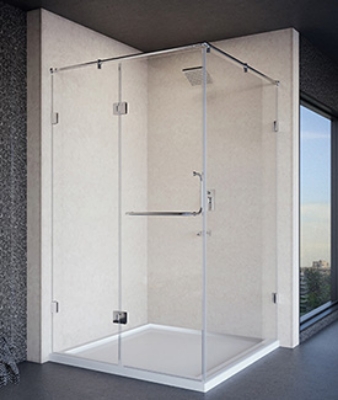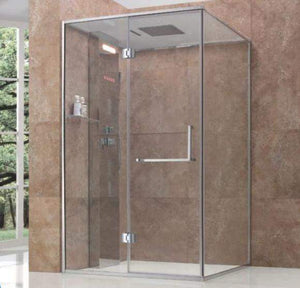Efficient and Easy Installation of a New Shower Unit
Efficient and Easy Installation of a New Shower Unit
Blog Article
This post below in relation to How to Install a Direct-to-Stud Shower Enclosure is immensely captivating. Check it out for your own benefit and decide what you think of it.

An effective shower installment calls for careful preparation and a great deal of job. Most of the times, you will certainly require to do three types of jobs: mounting walls, mounting the plumbing, and finishing wall surfaces.
Prep work
To start with, you must select the sort of shower that you want to install. It is necessary to ascertain whether the picked shower is capable of handling certain systems as well as can regulate a risk-free degree of water with the central heating boiler. Most shower units nowadays are created to be adaptable to different water stress (such as stored warm water and also chilly mains).
It is likewise important to think about the water stress and also the preparation of the piping and drain for the shower
Various Sorts Of Shower Units
Technique
Relying on the type of shower you desire to set up, the shower head need to either be fitted in order to prevent its contact with the water in the bath below or the base tray, or it must have a check valve.
Prior to starting, it is recommended to mark the positions of the shower head and control, as well as to plan the pipe-work involved. Furthermore, the water drainage system to remove the waste water will certainly require to be intended. Both positions of the cable television path and the shower switch will certainly also require to be thought about if an immediate or electrical shower system is being mounted.
Use the instruction overview supplied with the shower system to fit the shower control.Before suitable the pipes that will supply the water to the shower system, it is important to cut off the water supply. In order to safeguard the pipes, they should be offered a water resistant covering and likewise fitted with isolating shutoffs. The pipelines can after that be hidden right into the wall surface and smudged over to neaten the total appearance.
Fit the base tray, shower head, and installations.
Attach the main shower control to the pipes that will certainly be supplying the water (This may need a women screw thread adapter).
Reconnect the water as well as examination the pipelines for any leaks, as some might need tightening.
If you are setting up an electrical shower, remember to turn off the electrical energy supply before making any type of electric connections. As soon as these links have been made (there need to be support within the instruction manual), the power supply can be changed back on.
Adjusting Water Pressure to Match Your Shower
The cold water reservoir can be raised to a higher height (occasionally as low as 150mm (6inches)) by fitting a strong wooden assistance beneath it - possibly made up of struts and blockboards. If you select this option, the primary and circulation pipelines will certainly likewise have to be elevated to fulfill the new elevation of the reservoir.
Additionally, a booster pump (a single pump or a dual/twin pump) can be fitted. Whichever type is selected, it must be attached right into the power supply in order to operate.
Piping as well as Water drainage
It is best to use 15mm size supply pipelines, and make the go to the shower as short and straight as possible so regarding keep optimal pressure and also reduce warm loss. In addition, by minimising making use of joints for pipe corners, you can lower the resistance in the circulation of the water supply. You can accomplish this by flexing the pipelines instead.
A Lot Of Common Blunders
How Do You Install a Shower? Follow This Guide
Installing a Shower at a Glance
Tools & Materials: Level, electric drill, caulk, hole saw, cedar shims, shower unit Step 1: Drill pilot holes Step 2: Prep fixture holes Step 3: Move unit into place Step 4: Caulk corners and base Step 5: Attach door Step 6: Install shower pan Whenever plumbing is involved in a DIY project, people worry about what might go wrong. The truth is that installing a shower isn’t that complicated, and you can save a lot of money by doing it yourself. You shouldn’t need to make any alterations to your plumbing to complete the job, and most of the tools you need will be provided in your new shower kit.
Can I Install a Shower Myself?
Even if you’ve never installed a shower before, you’ll find this to be a project that is perfectly suited for DIYers with a moderate level of experience. Whether you're doing a bathtub conversion or installing a new stall, most of what you need comes in shower kits that you can purchase from a hardware store. The first thing you need to do is determine what type of shower stall you want.
Single-panel stalls are the easiest to install because they come preassembled. All you need to do is put them in place. Multi-panel showers require a few additional steps, but you’ve got more control over the appearance of your unit. Multi-panel units are also much easier to handle if you’re going to do the installation without any help.
Be sure to take all appropriate safety precautions, such as wearing eye protection and gloves. When you’re removing or installing a shower unit, you might kick up debris that could hurt your eyes. You’ll also need to work with equipment that will get extremely hot, so be sure to have safety gloves handy.
Tools and Materials
2- to 4-foot level Electric drill with a 1/8-inch drill bit Caulk 2-inch hole saw Cedar shims The unit itself Before You Begin: Prep the Space
It’s highly important to measure your space accurately before putting the stall in. Measuring from the floor upward and from each corner outward will ensure you’ve got the right measurements. What you’re looking for is where the plumbing apparatuses are going to come through the stall. Transfer these measurements over to the back of your unit by drawing the locations of these holes using a pencil or marker.
Pull out your old shower and make sure to scrape off all the old caulking. Be thorough because you want to work with smooth surfaces for the best installation. Once you’ve pulled out your existing shower, you need to make sure that the floor is clean and dry. The best way to clean debris is with a shop vacuum, as it’ll soak up water and dirt together.
If you’re experiencing any plumbing issues, such as low water pressure, this is a perfect opportunity to solve them. Make sure that the pipes themselves are not in need of patching and clean your showerhead. When you turn the water back on after your project, check the pipes for signs of wear or disrepair. Anything beyond minor repairs should be handled by a plumber, and this is the best time to bring in a professional.
If the floor has any moisture at all, don’t proceed until it’s completely dry. The last thing you need is for the floor to rot or invite mold and mildew into your base. Once everything is dry, apply waterproof wallboard to the walls. This can be attached with screws or nails, then sealed with caulk so that water doesn’t seep into any crevices.

Do you appreciate reading up on How to Install a Direct-to-Stud Shower Enclosure? Try to leave feedback down below. We'd be glad to hear your opinions about this posting. In hopes that you visit us again soon. If you enjoyed reading our blog posting plz don't forget to share it. Kudos for your time. Visit again soon.
Book Report this page